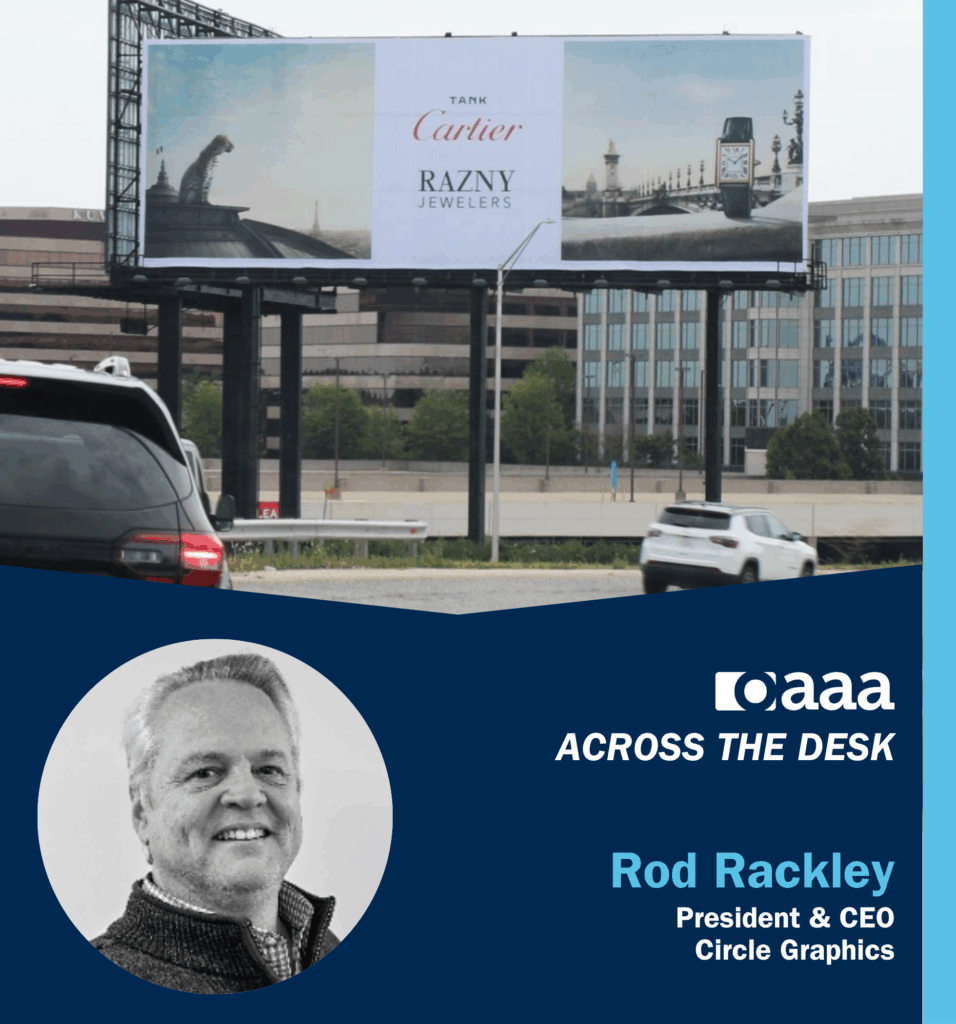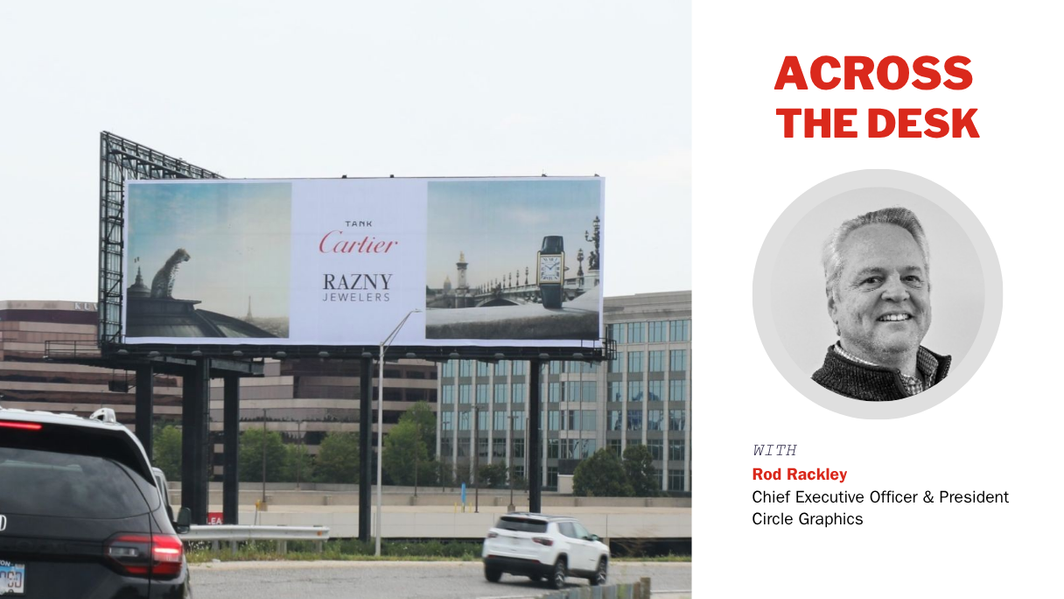
Every month, OAAA’s editorial team sits down with an industry leader to discuss the latest insights, trends, and best practices for the OOH industry. This month, we sat down with Circle Graphics’ CEO & President, Rod Rackley who discussed what excites him about OOH right now, his message for brands that haven’t bought OOH before, and what’s next for the industry.
Read Rod’s Q&A in The Drum.
What excites you about OOH right now?
Out of home has always thrived on optimism — and I sense a shift toward it again. With interest rates poised to come down further and the effects of the domestic agenda beginning to show tangible results across multiple sectors, we’re entering a period where OOH can play offense again with larger, more ambitious campaigns. Add to that the energy surrounding the 2026 global sporting events and political cycles, and OOH will once again be where culture and commerce intersect — helping brands reach audiences in a big way.
At Circle Graphics, we share that optimism and forward vision. Our team has several major product announcements coming in Q1 ’26 aimed at making static spectacular and seamlessly executable — elevating the craft and creativity that have always defined great OOH executions. Be on the lookout for more from us on this front.
I’m also encouraged by the leadership at OAAA — Scott Wells as Chair, Anna Bager as CEO, and Pat Dolan as COO — who are all working diligently and collaboratively to keep this industry unified and forward-looking. We have a strong association that serves us on many fronts, and we should all support their efforts rather than offering slights from the back row.
What message do you have for brands that haven’t bought OOH before?
Try something different — and believe in what you see and experience in the real world: people interacting with brands. Don’t carve out a predictable 4% of your media plan for OOH — give it a real chance and focus on the plan. Nothing builds trust or grows connection like the physical presence of a message in the real world. Push creative boundaries to take full advantage of our oversized, dynamic canvases. It’s where big brands still show up — and where smart, emerging brands get discovered.
OAAA has tons of case studies online that support these assertions. We need senior brand marketers to have the courage to tell their agencies and planners to use OOH more.
What’s the next big thing for OOH?
I think we’ll see a series of steady advancements and growth steps rather than one singular breakthrough. The biggest immediate wins are coming from removing friction — automating workflows, connecting buy-side and supply-side systems, and shortening campaign turn times by moving printed campaigns closer to the immediacy of the digital landscape. And I’m not talking about just emailing spreadsheets faster.
Circle is investing heavily and working alongside media companies and specialist agencies on API-driven integrations that eliminate redundant order entry and speed campaign activation. Our Amplify division will be launching new products designed to draw more attention to static creative — helping brands command focus and impact. More to come in the new year on those offerings.
Let’s just get on with it! We need to embrace hotel-style inventory transparency — where static avails can be seen, selected, and purchased online, and where the velocity from contract to installation increases dramatically. Circle is already positioned for that future, with three factories, a consistent two-day turnaround on most OOH products (walls and large transit wraps take a bit longer, but those processes have improved as well), and integrations with forward-thinking companies and platforms.
When that shift comes, speed and reliability will be the everyday currency — and we’re ready.
As the OOH ecosystem continues to evolve, what are the biggest opportunities and challenges for suppliers?
The biggest opportunity — and challenge — is remembering that 85% of OOH is still static and remains a huge component of industry growth. Digital expansion is exciting, but we can’t marginalize the majority of our inventory. Static faces must be part of the data conversation, part of programmatic, and part of every major planning platform.
Suppliers can lead here by embracing shared standards, ongoing innovation, API connectivity, and data transparency. Printers, for example, still work off static PDFs for every campaign as a form of “seat-covering.” We need to move toward a shared Ad Display Database that includes everything: impressions, quality metrics, material specs, installation notes, shipping info, geo-coordinates, and points of contact — all in real time.
And no, it doesn’t exist yet. Geopath’s data doesn’t include all the fields required, and it doesn’t include all inventory. A living, industry-wide dataset would unlock incredible efficiencies and eliminate rework, waste, and error across the supply chain. That’s the kind of initiative Circle wants to be part of — one that drives innovation, efficiency, and value for everyone in the OOH ecosystem.
Published: November 17, 2025
